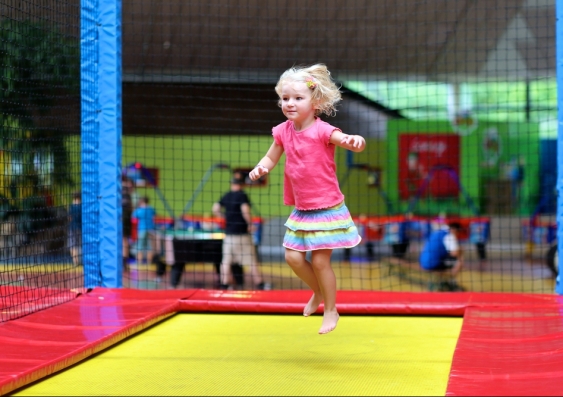Why we need mandatory safety standards at indoor trampoline parks
As injuries at indoor trampoline parks soar, there is an urgent need for mandatory minimum safety standards, write Lisa Nicole Sharwood, Davide Eager and Susan Adams.
As injuries at indoor trampoline parks soar, there is an urgent need for mandatory minimum safety standards, write Lisa Nicole Sharwood, Davide Eager and Susan Adams.

��
��
Indoor trampoline parks have rapidly become a popular solution. The first park opened in 2012 and there are now around 80 across the country.
Attendance has soared, and so too has the number of injuries, as our research – published today in the – shows. Some injuries are minor but others have resulted in permanent disability.��
While some indoor trampoline parks operate to a high safety standard, others don’t, and there’s nothing compelling them to lift their game. Voluntary Australian safety standards are currently in draft form and under review, but to make a real difference to kids’ safety these standards must be mandatory.
Emergency departments across Victoria, Queensland and Western Australia saw almost 500 injuries from indoor trampoline parks between 2012 and 2016. And that’s an underestimate; our research used data from the state’s injury surveillance databases, missing those treated in private hospitals or by their GP.
Dislocations, sprains and strains were most common, followed by fractures. Some 15% of children presenting to hospital were admitted due the serious nature of their injuries.
More than half of all injuries were in children aged 10 to 14 years, with girls just as likely to be injured as boys.
The biggest problem was when multiple users were on one trampoline, attempting to do somersaults or flips, or landing awkwardly.
Another key problem is when users jump into the foam landing pit, which is not mandated to ensure sufficient depth, padding and impact reduction. It would be possible to land on a concrete block on your head, for example.
Trampoline park operators ask entrants to sign a risk warning and waiver, accepting the “risk of personal injury and death”, prior to entry. While this risk might be low, in rare cases users have sustained permanent and . The case of one user sustaining resulting in lifelong quadriplegia, for example, is now .��
This trend has been also seen internationally, where a previously fit and healthy 30-year-old man attempted a flip and landed awkwardly in a foam pit. The pit was only half the recommended depth, and the injury .
Entrepreneurs have cashed in on the rapid growth of trampoline park venues across Australia, with one $32 million of revenue in the first two years.
The problem is that there is currently no Australian standard for indoor trampoline parks – voluntary or mandatory. That means anyone can set up a profitable park by importing cheap trampolines, squeezing as many as they can into a facility, and scrimping on daily safety checks and maintenance.
Regulators have drafted a voluntary set of safety standards – minimum safety thresholds – to reduce the risk of serious traumatic injuries at indoor trampoline parks. These are currently under review, pending publication later this year. But these are voluntary; park operators can choose to follow them or not.
Australian standards for indoor trampoline parks would ensure operators are consistently setting up and running safe and well-maintained venues. Recommendations to include:
Until park operators are mandated to adhere to safety standards, patrons have limited legal recourse in cases where trampoline parks do not comply.
��

��
So what can you do?
Well, you can use your own or a friend’s outdoor trampoline. While there are, of course, risks for children jumping on backyard trampolines, apply to the import, enclosure systems, structural integrity, and entrapment risks to protect children falling off or being injured on elevated trampolines. The ACCC provides a good safety checklist for choosing a backyard trampoline.
If you are going to send your kids to an indoor trampoline park, opt for one with . This is a to which ATPA members must adhere, and which covers around one-third of parks. While we wait for mandatory regulation, indoor trampoline park users can vote with their feet and choose to jump at centres that take safety seriously.
is an Injury epidemiologist at ; is a Professor of Risk Management and Injury Prevention and Assistant Student Ombud at , and is a Paediatric Surgeon and Conjoint Lecturer in the School of Women's & Children's Health at .
This article was originally published on . Read the .